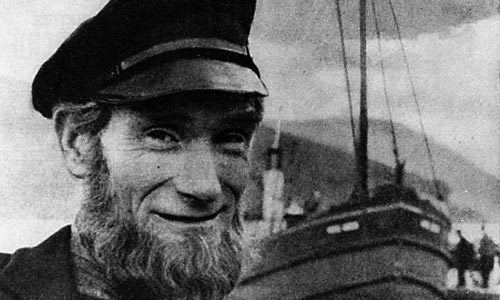 | ||
Para handy the sea cook
Para Handy, the anglicised Gaelic nickname of the fictional character Peter Macfarlane, is a character created by the journalist and writer Neil Munro in a series of stories published in the Glasgow Evening News between 1905 and 1923 under the pen name of Hugh Foulis.
Contents
- Para handy the sea cook
- Para handy a new cook
- Stories
- Film
- Television
- Theatre
- Published collections
- References
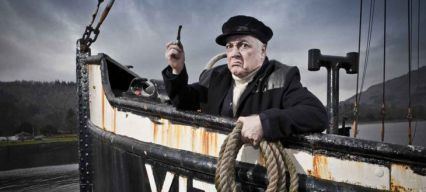
Para Handy is the crafty Gaelic skipper of the Vital Spark, a Clyde puffer (steamboat) of the sort that delivered goods from Glasgow to Loch Fyne, the Hebrides, and the west coast highlands of Scotland in the early 20th century. The stories partly focus on his pride in his ship, "the smertest boat in the tred" which he considers to be of a class with the Clyde steamers, but mainly tell of the “high jinks” the crew get up to on their travels. He had at least one crossover with Munro's other popular character, Erchie MacPherson of Erchie, My Droll Friend. The name is an anglicisation of "Para Shandaidh", which means "Peter (Paraig) son of Sandy", and he is content to describe himself as "Chust wan of Brutain's hardy sons".
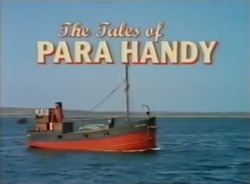
The other principal characters who form the crew of the Vital Spark are:

Also featured is Hurricane Jack (real name John Maclachlan), Para Handy’s rather more outrageous adventurer friend.
Key points of friction among the crew are transporting ministers of the church (bad luck), transporting gravestones (bad luck), the small boats carrying passengers across the Clyde in Glasgow called the Cluthas (in Para Handy’s view, the lowest of the low in Clyde shipping), and Macphail’s taste for bodice-ripping women’s fiction.

Para handy a new cook
Stories
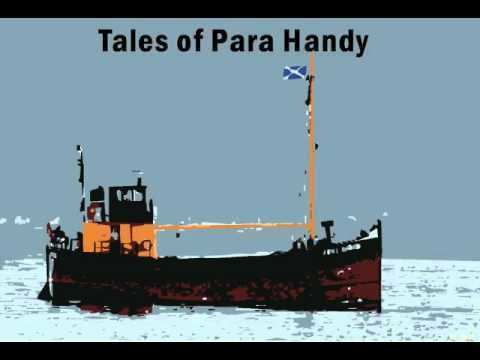
The stories are set in the Firth of Clyde, Loch Fyne and occasionally the Western Isles of Scotland. The stories are known for their humour and also for their evocation of a lost era in the life of these coastal communities when they depended completely on the water and not, as now, on road transport and the ferry service. This was a time when Gaelic was still spoken by some as their native language and everyone in the community was known to all, for good or ill. The church (the kirk) was much more significant in community life and a lot of humour in the stories is derived from scriptural misquotations, which contemporary readers, with their thorough knowledge of the Bible, would have understood. Reference is also made to schisms in the kirk, with the same humour, which could sting those who were over-serious in defence of their splinter denomination.
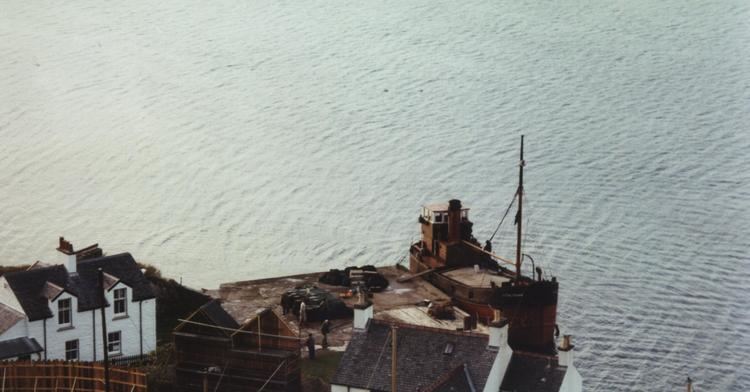
The stories give an insight into the life and attitudes of the Firth of Clyde, its sea lochs and the city of Glasgow. They were written as occasional pieces in the "Looker On" column in the "Glasgow Evening News" and were designed to be recognisable to Glaswegians with Highland backgrounds and also those who were city-bred but regularly escaped the smoke to go "doon the watter" to the Clyde resorts of Rothesay, Millport, Dunoon and Tighnabruaich. The Vital Spark also makes it to Arran and Loch Fyne, which were more adventurous destinations but also accessible to city dwellers by the railway steamers that Para Handy often envies. Some of the stories were written during the First World War and give insight into the home front of the time, casting it always in a humorous light.
Film
The Para Handy stories were the inspiration for the 1954 film The Maggie (known in the U.S. as High and Dry), directed by Alexander Mackendrick.
Television
There have been three television adaptations of the Para Handy tales, all for the BBC:
The earlier series updated the stories by giving them contemporary settings. The last series is set between the world wars.
Theatre
Published collections
Neil Munro published three collections of Para Handy stories:
All three of these collections have been gathered together and reissued in single volumes, once in 1986 and again (despite the subtitle of the later publication) in 1992:
